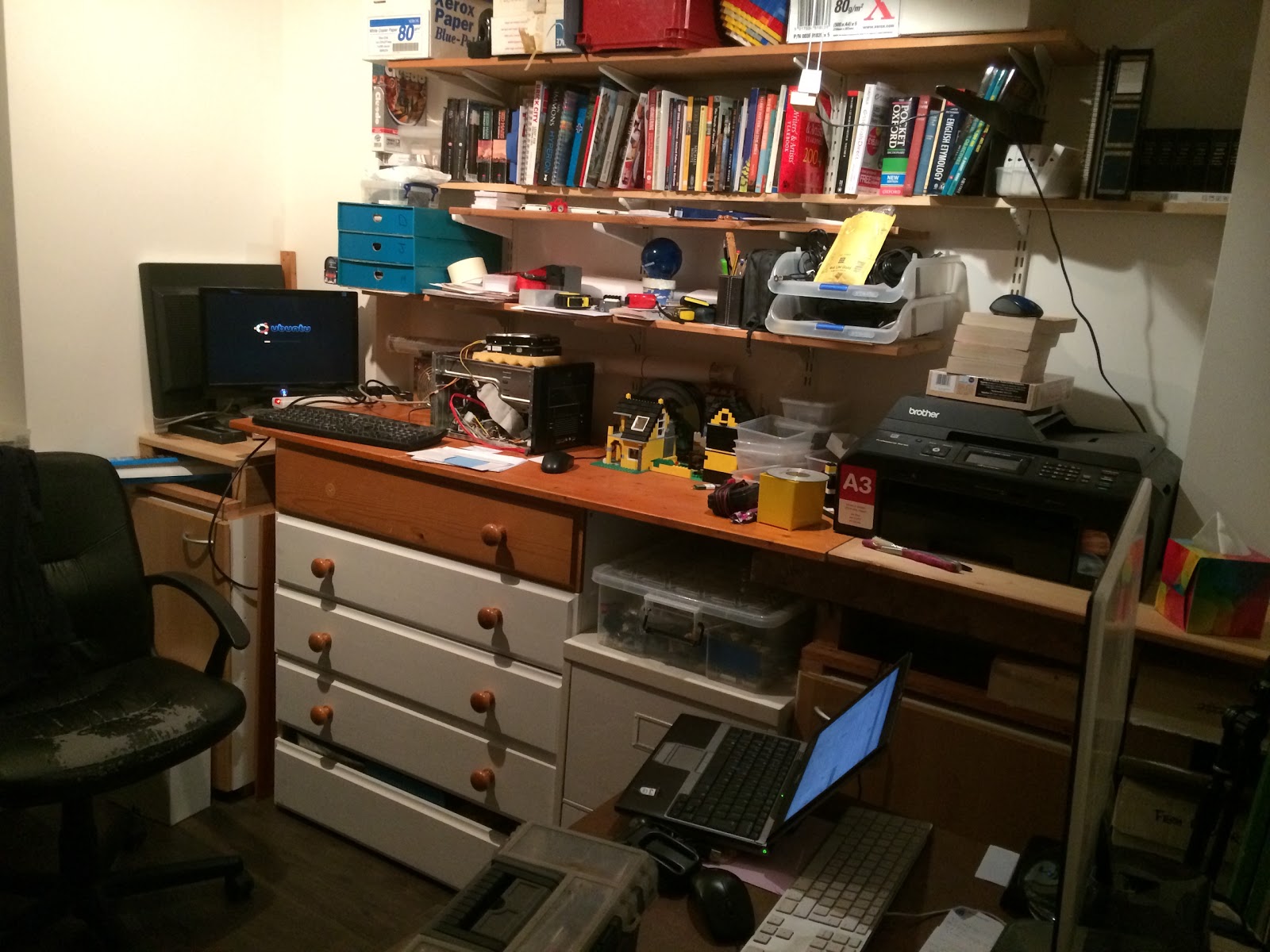 Now that I have moved into my man-cave, I am able to start working on a number of projects that have been on hold whilst we rebuilt the house. Stuff like rebuilding a computer, sorting out the XBMC media box, and stuff like that. And building cool things out of Lego.
Now that I have moved into my man-cave, I am able to start working on a number of projects that have been on hold whilst we rebuilt the house. Stuff like rebuilding a computer, sorting out the XBMC media box, and stuff like that. And building cool things out of Lego.One of the projects that has been ticking over at the back of my mind is to build a clock. A quick internet search shows lots of ideas of building clock faces out of Lego, and some of these are very artistic. A lot of work goes into making some of these designs, and eventually my clock will have an arty face as well.
For the idea in hand, I am not content to use a purchased clock mechanism. The challenge is to build the mechanism as well. For this, Lego Technic is my weapon of choice, but there are a number of challenges:
- Lego axles are cross-shaped rather than round, and the gears have a cross-shaped hole in the middle so that the gears do not spin on the axle. The challenge is that a clock has two concentric axles for the hour and minute hand - three if you want a second-hand as well. So somewhere in the mechanism, at least one gear must be able to spin freely on the axle.
- It is considered extremely bad form among Adult Fans of Lego to deliberately damage one's Lego. Therefore the drilling-out of the axle-cross in a gear is not permitted. Having said that, I confess to doing exactly that a number of years ago.
- The minute hand rotates sixty times faster than the hour hand. A gear ratio of 60:1 is required between the two concentric axles. Lego gears are available with 8, 16, 24, and 40 teeth (there are a few others too). I leave the maths as an exercise for the reader.
On the front (in the lower part of the picture to the left) is a dark grey part , known as a "differential ". This part is found in many of the Technic vehicle sets, and your car has one too. I use it here, because it has round axle-holes. The dark grey bit itself is driven by the small 8-tooth gear to its right. The axle through the middle is driven from the back of the mechanism (top of the picture).
 So here I present, with a simple face to support the whole thing, version 1 of my Lego clock. There is no drive system yet - you have to turn the minute hand manually. But the hour hand rotates at exactly the right speed when you do so. My son called it a Saturday alarm clock - you can set it for exactly the time you want, and it will make absolutely no sound at that time on a Saturday, thus allowing you to have a lie-in. so practical.
So here I present, with a simple face to support the whole thing, version 1 of my Lego clock. There is no drive system yet - you have to turn the minute hand manually. But the hour hand rotates at exactly the right speed when you do so. My son called it a Saturday alarm clock - you can set it for exactly the time you want, and it will make absolutely no sound at that time on a Saturday, thus allowing you to have a lie-in. so practical.If I have nothing else to do on Saturday after my lie-in, I might start work on the drive mechanism. Episode 2 of this saga will follow in a few months' time. If you can't wait for me to build mine, have a look at what others have done.

Nobody else has noticed, except my son, that the minute and the hour hand shouldn't rotate at a 60:1 ratio but a 12:1 ratio. Back to the workbench!
ReplyDelete